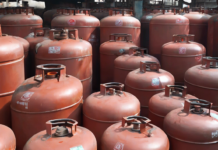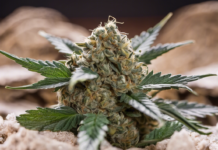The Kala Pani Jail, also known as Cellular Jail, located in the Andaman Islands of India, holds a haunting and dark history that has left a significant impact on the Indian struggle for independence. Built by the British colonial rulers in the late 19th century, this infamous jail was used to exile political prisoners and freedom fighters who dared to challenge British rule. The very name “Kala Pani” evokes fear and dread, symbolizing the isolation, brutality, and inhumanity that the prisoners endured during their incarceration.
The Construction of Kala Pani Jail
Constructed between 1896 and 1906, the Cellular Jail was designed as a central prison with seven wings radiating from a central watchtower. The architecture of the jail was unique for its time and was meant to isolate prisoners from one another, a system known as “panopticon” where a single guard could watch all the inmates without them knowing whether they were being observed.
Life Inside the Kala Pani Jail
The conditions inside the jail were deplorable, with overcrowded cells, poor sanitation, inadequate food, and harsh treatment by the guards. Prisoners were subjected to forced labor, beatings, and solitary confinement, with little regard for their basic human rights. Many inmates died due to disease, malnutrition, and torture, making Kala Pani Jail a symbol of colonial oppression and cruelty.
Notable Inmates
The Cellular Jail housed many prominent freedom fighters and political prisoners during the Indian independence movement. One of the most well-known inmates was Vinayak Damodar Savarkar, a revolutionary who was sentenced to life imprisonment for his involvement in the Indian nationalist activities. Other notable inmates included Batukeshwar Dutt, Diwan Singh Kalepani, and Fazl-e-Haq Khairabadi, all of whom endured immense suffering and hardship during their time in captivity.
Resistance and Repercussions
Despite the harsh conditions, the inmates at Kala Pani Jail continued to resist British rule through acts of defiance, hunger strikes, and protests. The authorities responded with even harsher measures, including torture and solitary confinement, to suppress any form of dissent. The resilience and courage of the prisoners in the face of adversity became a source of inspiration for the independence movement across India.
Legacy of Kala Pani Jail
The Cellular Jail stands today as a grim reminder of India’s colonial past and the sacrifices made by those who fought for the country’s freedom. The jail has been converted into a national memorial, preserving the stories and struggles of the inmates for future generations to remember and reflect upon. Visiting the jail serves as a somber reminder of the price paid for independence and the resilience of the human spirit in the face of oppression.
FAQs about Kala Pani Jail
- What was the purpose of Kala Pani Jail?
-
Kala Pani Jail, or Cellular Jail, was built by the British colonial rulers to exile political prisoners and freedom fighters who opposed British rule in India.
-
How were the conditions inside the jail?
-
The conditions inside the jail were deplorable, with overcrowded cells, poor sanitation, inadequate food, and harsh treatment by the guards.
-
Who were some of the notable inmates of Kala Pani Jail?
-
Vinayak Damodar Savarkar, Batukeshwar Dutt, Diwan Singh Kalepani, and Fazl-e-Haq Khairabadi were some of the notable inmates who were imprisoned in the Cellular Jail.
-
How did the inmates resist British rule inside the jail?
-
The inmates resisted British rule through acts of defiance, hunger strikes, and protests, despite facing harsh retaliation from the authorities.
-
What is the significance of Kala Pani Jail in India’s independence movement?
- Kala Pani Jail is a symbol of India’s struggle for independence and the sacrifices made by freedom fighters who fought against colonial oppression.
Exploring the dark history of Kala Pani Jail offers a glimpse into the hardships and struggles faced by those who dared to challenge the might of the British Empire. The legacy of this infamous prison continues to remind us of the resilience and courage of individuals in the face of tyranny and injustice, inspiring generations to strive for freedom and equality.








